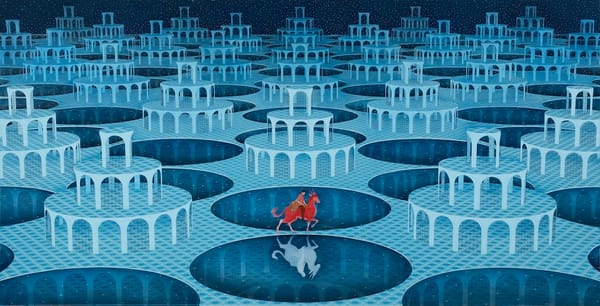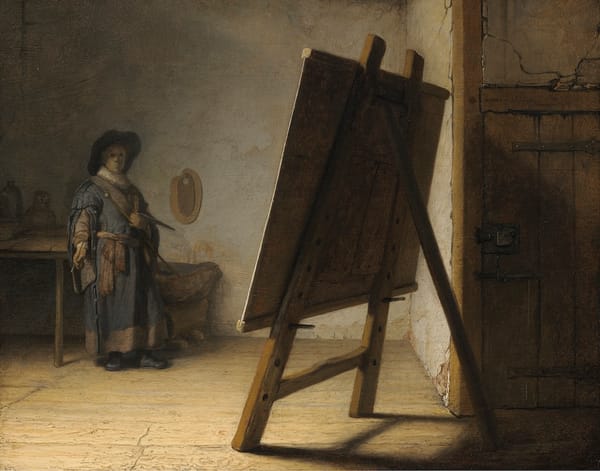Public Art Installations: Iconic Sculptures and Monuments in the U.S.
Explore iconic public art installations across the U.S., from Chicago’s Cloud Gate to the Vietnam Veterans Memorial in Washington, D.C., and discover how these monumental sculptures reflect American history, culture, and contemporary values.

Public art is an integral part of American culture, contributing to the identity and aesthetic appeal of cities and communities across the nation. From sculptures that have become cultural landmarks to monumental installations that embody the spirit of a place, public art in the U.S. reflects the diversity, history, and creativity of the country. It can spark conversation, foster a sense of belonging, or challenge the way we see the world. In this piece, we will explore some of the most iconic public art installations across the United States, delving into their origins, significance, and impact on both locals and tourists alike.
1. Cloud Gate ("The Bean") – Chicago, Illinois
Arguably one of the most recognizable pieces of public art in the United States, Cloud Gate—popularly known as "The Bean"—sits in Millennium Park in Chicago, Illinois. Designed by British-Indian artist Anish Kapoor, this monumental stainless-steel sculpture reflects the city's skyline in an ever-changing manner due to its curved surface, which distorts and enhances the reflections.
Cloud Gate was completed in 2006 and has since become an iconic symbol of Chicago. Its polished, mirror-like surface invites interaction, as visitors can walk around and underneath it, experiencing its reflections from different angles. The sculpture's design, which was inspired by liquid mercury, speaks to the industrial history of Chicago while offering an engaging, contemporary experience that resonates with people of all ages.
While some sculptures demand admiration from a distance, Cloud Gate is different. Its interactive nature blurs the line between viewer and artwork, making it a participatory experience that encourages curiosity and engagement. This openness to interaction has played a significant role in its widespread popularity, as people from all walks of life come to take photos, marvel at their reflections, or simply enjoy the creative play of light and form.
Cloud Gate is more than just a sculpture; it is a meeting point, a symbol of Chicago's vibrant cultural scene, and a reflection of both the city's architectural grandeur and the people who call it home.

2. LOVE – Philadelphia, Pennsylvania
Robert Indiana's LOVE sculpture, featuring the iconic stacked letters of the word "LOVE" with the tilted "O," is one of the most widely recognized public art pieces in the U.S. Installed in Philadelphia's John F. Kennedy Plaza (known as LOVE Park) in 1976, the sculpture quickly became a beloved symbol of the city of brotherly love.
Originally created as part of Indiana's exploration of American identity through pop art, the LOVE sculpture resonates with the themes of hope, unity, and affection. Its simplicity and bold design speak to the power of language and symbolism in public art. The sculpture has since been replicated in cities around the world, but the original in Philadelphia holds a special place in the hearts of locals and visitors alike.
LOVE's universal message transcends cultural and geographical boundaries, making it an enduring icon of public art. The playful and accessible nature of the sculpture invites people to engage with it, whether through photography or personal reflection. In a bustling urban landscape, LOVE offers a brief moment of connection and contemplation, a reminder of the values that bind us together.

3. Charging Bull – New York City, New York
Standing proudly in Manhattan's Financial District, Charging Bull by Arturo Di Modica is one of the most famous symbols of Wall Street. The massive bronze sculpture, installed in 1989, depicts a bull in a stance that exudes power, aggression, and optimism—a metaphor for the financial district's resilience and bullish market performance.
Di Modica originally created and installed the sculpture without permission, positioning it outside the New York Stock Exchange as a statement about the strength and determination of the American people following the 1987 stock market crash. The sculpture was eventually moved to its current location near Bowling Green Park and has become a permanent fixture and tourist attraction.
Charging Bull is often interpreted as a symbol of capitalism and the American dream, reflecting the aspirations and anxieties of one of the world's most influential financial hubs. It embodies both the triumphs and pitfalls of a system where risk and reward are deeply intertwined. For many visitors, the sculpture represents hope for a prosperous future, while others see it as a reminder of the volatility and unpredictability of financial markets.
In recent years, the installation of the Fearless Girl statue facing Charging Bull has added a new layer of interpretation, sparking conversations about gender equality, corporate responsibility, and the power dynamics inherent in public spaces. Together, these sculptures create a dialogue about the values and aspirations that drive American society.

4. Gateway Arch – St. Louis, Missouri
The Gateway Arch, soaring 630 feet above the city of St. Louis, is both an engineering marvel and an iconic piece of public art. Designed by Finnish-American architect Eero Saarinen, the arch was completed in 1965 as a monument to the westward expansion of the United States and the explorers and pioneers who ventured into the unknown.
Located on the banks of the Mississippi River, the Gateway Arch stands as a symbol of American ambition, innovation, and exploration. Its sleek, minimalist design reflects Saarinen's vision of creating a monument that was both modern and timeless, paying tribute to the past while looking toward the future.
The arch is a major tourist attraction, offering visitors the opportunity to take an elevator to the top for breathtaking views of St. Louis and the surrounding landscape. Its scale, beauty, and symbolic importance make it one of the most significant pieces of public art in the country.
The Gateway Arch also serves as a reminder of the complexities of American history, as it commemorates a period of expansion that was both triumphant and fraught with challenges for Indigenous peoples and settlers alike. Today, it stands as a testament to the nation's ability to reflect on its past while continuing to innovate and build for the future.

5. The Vietnam Veterans Memorial – Washington, D.C.
Located on the National Mall in Washington, D.C., the Vietnam Veterans Memorial is a powerful tribute to the men and women who served in the Vietnam War. Designed by Maya Lin and dedicated in 1982, the memorial consists of two black granite walls etched with the names of over 58,000 Americans who died or went missing during the conflict.
Lin's design, which was initially met with controversy due to its stark, minimalist approach, has since become one of the most revered public art installations in the country. The reflective surface of the wall allows visitors to see their own reflections alongside the engraved names, creating a poignant connection between the past and present.
The memorial is a place of reflection, mourning, and healing, offering a solemn space for visitors to honor the sacrifices of those who served. Its simplicity allows the names to speak for themselves, creating a powerful emotional experience that resonates with veterans, families, and all who visit.
The Vietnam Veterans Memorial is a testament to the power of public art to evoke deep emotions and foster a collective sense of remembrance. It transcends the physical space it occupies, becoming a place where history, memory, and personal experience converge.

6. Cadillac Ranch – Amarillo, Texas
In the wide, open plains of Amarillo, Texas, sits Cadillac Ranch, one of the most quirky and unconventional public art installations in the United States. Created in 1974 by a group of artists known as the Ant Farm, Cadillac Ranch features a line of ten Cadillac cars half-buried nose-first in the ground, their tail fins sticking up into the sky.
The installation, which was conceived as a statement about American consumer culture and the evolution of the Cadillac automobile, has since become a symbol of roadside Americana. Visitors are encouraged to interact with the cars by spray-painting them, resulting in a constantly changing, graffiti-covered canvas that reflects the transient and ever-evolving nature of pop culture.
Cadillac Ranch is a playful and irreverent piece of public art that invites participation and creativity. Its open invitation for visitors to leave their mark has transformed it into a living, breathing artwork that embodies the spirit of freedom and self-expression.
Despite its seemingly lighthearted nature, Cadillac Ranch raises questions about consumerism, obsolescence, and the cultural icons that define American identity. It serves as both a critique and celebration of the American fascination with cars and roadside attractions, making it a unique and thought-provoking destination.

7. Mount Rushmore – Keystone, South Dakota
Carved into the granite face of the Black Hills in South Dakota, Mount Rushmore is one of the most iconic monuments in the U.S. This colossal sculpture, designed by Gutzon Borglum and completed in 1941, features the faces of four American presidents: George Washington, Thomas Jefferson, Theodore Roosevelt, and Abraham Lincoln.
Mount Rushmore is both a celebration of American leadership and a symbol of the country's ideals of democracy, liberty, and progress. The scale of the monument reflects the grandeur of these ideals, as well as the ambition and determination of the nation itself.
However, Mount Rushmore's creation was not without controversy. The land on which it was carved is sacred to the Lakota Sioux, and the monument has long been a source of tension between Indigenous groups and the U.S. government. In recent years, there have been calls for greater recognition of the complex history of the site and its significance to Native American tribes.
Despite these challenges, Mount Rushmore remains a powerful symbol of American identity and a popular destination for visitors from around the world. It serves as a reminder of the nation's achievements, as well as the ongoing dialogue about its history and future.
Conclusion
Public art installations across the United States serve as more than just aesthetic contributions to their surroundings; they symbolize the country’s values, history, and culture. From the interactive and playful Cloud Gate in Chicago to the solemn and reflective Vietnam Veterans Memorial in Washington, D.C., these sculptures and monuments connect people to both the physical spaces they inhabit and the deeper narratives that shape their collective experiences.





